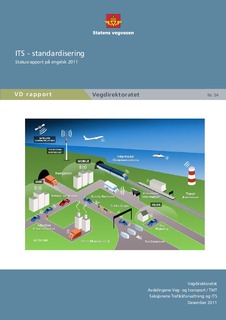| dc.description.abstract | Standardisation, which has been important ever since the emergence of ITS, is now becoming
increasingly urgent.
Up until now, most of the ITS standards have been stand-alone standards such as Electronic Fee Collection and traffic information (RDS-TMC). There is no doubt that EFC and RDS-TMC standards have been essential in bringing ITS technology to the mass market, have driven down product prices, and have allowed these services to become interoperable. This report gives a good overview of current standards and goes on to explain the next stage of ITS standards.
ITS can be used to prevent accidents, increase transport efficiency, reduce environmental impact and improve sustainability, while providing an improved user experience. Policies are being set both on the national level, on the regional level such as EU Directives, and lately also between regions, such as between the US and Europe. It is clear that some targets are incompatible, and the systems trying to incorporate them will need to handle many parameters and be flexible for the future. Taken together, there is no doubt that the next stage of ITS will see increased complexity. The task for standardisation is to hide this complexity from the users.
The good news is that the standardisation domain, together with R&D projects, is focusing on this task. There are many organisations at work now, and good standards are being produced. Unfortunately, there is duplication of work between these organisations, and the standards being produced are not necessarily interoperable with each other. This problem has been recognised, and both the EC and US DoT are actively trying to bridge the gaps.
The perceived situation at the present is that the balance between Safety requirements and Efficiency requirements has been tilted in favour of anti-collision vehicle safety. This is a result of the car makers being a strong group politically and financially, and there is no comparable group from the efficiency side to counter this strength.
From a policy perspective, there is significant on-going work to support the policy documents from the EC (ITS Action Plan and ITS Directive). Topics in the ITS action plan that are of special interest include:
- Real time traffic and traveller data sharing to support a safer and more relaxed driving situation
- International road signing and information layout and formats to support common
understanding across borders
- International Automatic Vehicle Identification/Electronic Fee Collection systems to support common payment services and a greener transport sector due to differentiated emission fees
- Emergency call and safety warnings to reduce the number of traffic fatalities and accidents
These topics are consistent with the overall road transport development strategy of the Norwegian Ministry of Transport and Communications. Following up and impacting the standardisation organisations (SDOs) and forums working on these aspects will lead to specifications in line with Norway’s special interests. | nb_NO |

